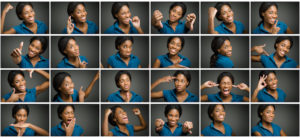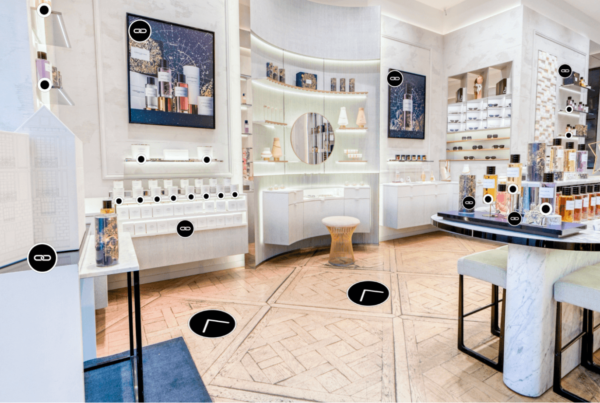There’s no shortage of memes showing facial expressions, from Chuck Norris to the Queen of England to seals and creepy cats, that feature a blank face purportedly expressing excitement, satisfaction—or, in the case of Mr. Norris, “deadliness.” The irony? All of the facial expressions for each subject, regardless of the meme, look the same.
In reality, a single face can convey multiple emotions. As a result, you often have to depend on more than just the look on someone’s face to understand what it means.
Understanding Facial Expressions

Facial expressions involve different positions of the different elements of a human face. These expressions can be interpreted as conveying a feeling or emotion. Most common facial expressions fall into simple categories, such as those featured on this facial expressions chart:
- Happiness
- Sadness
- Anger
- Surprise
- Fear
- Disgust
People also convey micro-expressions, which are created by momentary facial contortions that reveal an involuntary emotion, sometimes one the individual may have been actively trying to conceal.
Though data points can be used to detect specific expressions, it can be difficult to draw a direct connection between an expression and how someone is actually feeling.
Why Facial Expressions Don’t Necessarily Mirror a Person’s Emotions
Some scientists have argued that basic emotions are often displayed the same way on different faces, regardless of culture. However, this conclusion has been hotly debated. Although facial expressions usually correlate with certain emotions, it can be difficult to accurately detect emotions using facial expressions alone. There are a variety of reasons behind this, including:

- Cultural differences: In some cultures, maintaining a stoic disposition, regardless of what you’re feeling, is encouraged. In others, it’s common for people to actively convey emotions with their expressions.
- People hide their emotions: In some social situations, it may be best to conceal one’s emotions. Many people understand how certain facial expressions betray emotion and successfully avoid showing them, thus hiding how they feel.
- Different emotions, same face: Someone’s face may not necessarily align with how they feel. A single emotion can be conveyed using multiple expressions, making it difficult to decipher what someone is feeling without contextual clues.
Detecting emotion is never foolproof, not by humans or AI systems that perform facial analysis. However, facial analysis systems are getting better and better, mapping more numerous points of the human face and using that data in a variety of use cases.
Analyzing Facial Expressions with FaceTrace.ai
FaceTrace by AlgoFace, an ethical face analysis platform, tracks 209 points across the human face to more accurately analyze a wide variety of facial expressions (triple the industry average). FaceTrace can track multiple faces at the same time, identifying each face, then tracking individual motions to discern facial responses. We recognize that facial expressions don’t always fully reflect people’s emotions. But FaceTrace.ai can accurately detect expressions and this has many uses. Request a trial of FaceTrace.ai today to see what it can do for your business.




